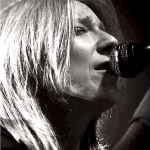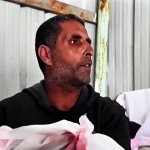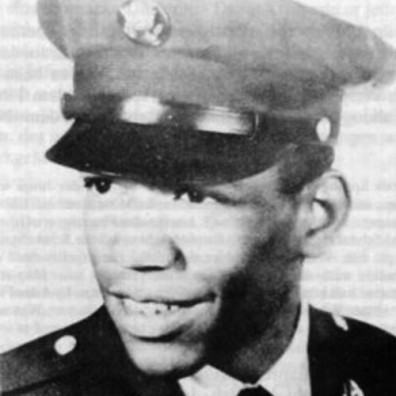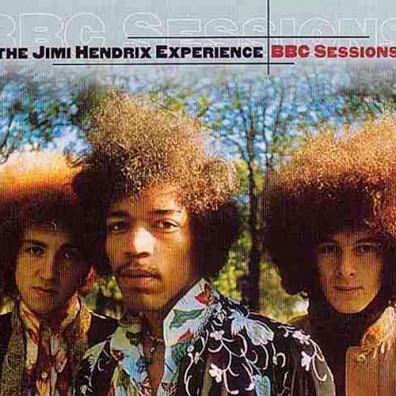Jimi Hendrix Life, Times & Fire
Army Life
Hendrix got into trouble with the law twice for riding in stolen cars. He was given a choice between spending two years in prison or joining the Army. Hendrix chose the latter and enlisted on May 31, 1961. After completing boot camp, he was assigned to the 101st Airborne Division and stationed in Fort Campbell, Kentucky. His commanding officers and fellow soldiers considered him to be a sub-par soldier: he slept while on duty, had little regard for regulations, required constant supervision, and showed no skill as a marksman. For these reasons, his commanding officers submitted a request that Hendrix be discharged from the military after he had served only one year. Hendrix did not object when the opportunity to leave arose.
At the base recreation centre, Hendrix met fellow soldier and bass player Billy Cox, and the two forged a loyal friendship that Hendrix would call upon from April 1969 until Billy’s breakdown shortly before Hendrix’ death. The two would often perform with other musicians at venues both on and off the base as a loosely organized band there named the Casuals. As a celebrity in the UK, Hendrix only mentioned his military service in three published interviews; One in 1967 for the film See My Music Talking (much later released under the title Experience), which was intended for TV to promote his recently released “Axis: Bold As Love” LP, in which he spoke very briefly of his first parachuting experience: “…once you get out there everything is so quiet, all you hear is the breezes-s-s-s…” This comment has later been used to claim that he was saying that this was one of the sources of his “spacy” guitar sound. The second and third mentions of his military experience were in interviews for Melody Maker in 1967 and 1969, where he spoke of his dislike of the army. In interviews in the US, Hendrix almost never mentioned it, and when Dick Cavett brought it up in his TV interview, Hendrix’s only response was to verify that he had been based at Fort Campbell.
It Starts…
After his Army discharge, Hendrix and army friend Billy Cox moved to nearby Clarksville, Tennessee and undertook in earnest to earn a living with their existing band. Hendrix had already seen Butch Snipes play with his teeth in Seattle and now Alphonso ‘Baby Boo’ Young, the other guitarist in the band, was featuring this gimmick. Not to be upstaged, it was then that Hendrix learned to play with his teeth properly, according to Hendrix himself: “… the idea of doing that came to me in a town in Tennessee. Down there you have to play with your teeth or else you get shot. There’s a trail of broken teeth all over the stage…” They played mainly in low-paying gigs at obscure venues. The band eventually moved to Nashville’s Jefferson Street, the traditional heart of Nashville’s black community and home to a lively rhythm and blues scene. After they moved to Nashville, upon learning there was already an established band by the name “The Casuals”, they amended their name to the “King Kasuals.”
While in Nashville, according to Cox and Larry Lee - who replaced Alphonso Young on guitar - they were basically the house band at “Club del Morocco”. Hendrix and Cox shared a flat above “Joyce’s House Of Glamour”. Bill ‘Hoss’ Allen’s memory of Hendrix’s supposed participation in a session with Billy Cox in November 1962, which he cut Hendrix’s contribution due to his over the top playing, has now been called into question; a suggestion has been made that he may have confused this with a later 1965 session by Frank Howard And The Commanders that Hendrix participated in. In December 1962, Hendrix visited his relatives in Vancouver, Canada, where as a child he had sometimes lived with his grandmother. In early 1963, Hendrix returned to the South. For the next two years, Hendrix made a living performing on a circuit of venues throughout the South catering to black audiences. These were venues affiliated with the Theatre Owners’ Booking Association (TOBA), sarcastically known as “Tough On Black Asses” because the audiences were very demanding. The TOBA circuit was also widely known as the Chitlin’ Circuit. In addition to performing in his own band, he performed with Bob Fisher and the Bonnevilles, and in backing bands for various soul, R&B, and blues musicians, including Chuck Jackson, Slim Harpo, Tommy Tucker, Sam Cooke, and Jackie Wilson. The Chitlin’ Circuit was where Hendrix refined his style.
Feeling he had artistically outgrown the circuit and frustrated at following the rules of bandleaders, Hendrix decided to try his luck in New York City and in January 1964 moved into the Hotel Theresa in Harlem, where he soon befriended Lithofayne Pridgeon (known as “Faye”, who became his girlfriend) and the Allen twins, Arthur and Albert. The Allen twins became friends and kept Hendrix out of trouble in New York. The twins also performed as backup singers (under the name Ghetto Fighters) on some of his recordings, most notably the song “Freedom.” Pridgeon, a Harlem native with connections throughout the area’s music scene, provided Hendrix with shelter, support, and encouragement. In February 1964, Hendrix won first prize in the Apollo Theater amateur contest. Hoping to land a gig, Hendrix made the club circuit and sat in with various bands. Eventually, Hendrix was offered the guitarist position with the Isley Brothers’ back-up band and he readily accepted. Hendrix’ first studio recording occurred in March 1964, when the Isley Brothers, with Hendrix as a member of the band, recorded the two-part single “Testify.” Hendrix then went on tour with the Isley Brothers. “Testify” was released in June 1964, but did not make an impact on the charts. After touring as a member of the Isley Brothers until summer or fall 1964, Hendrix grew dissatisfied and left the band in Nashville. There, he found work with the tour’s MC “Gorgeous” George Odell. On March 1, 1964, Hendrix (then calling himself Maurice James) began recording and performing with Little Richard. Hendrix would later say, “I want to do with my guitar what Little Richard does with his voice.” During a stop in Los Angeles while touring with Little Richard in 1965, Hendrix played a session for Rosa Lee Brooks on her single “My Diary.” This was his first recorded involvement with Arthur Lee of the band Love. While in L.A., he also played on the session for Little Richard’s final single for Vee-Jay, “I Don’t Know What You’ve Got, But It’s Got Me”. He later made his first recorded TV appearance on Nashville’s Channel 5 Night Train with The Royal Company backing up Buddy and Stacy on “Shotgun.” Hendrix clashed with Richard, over tardiness, wardrobe, and, above all, Hendrix’s stage antics. On tour with Richard they shared billing a couple of times with Ike and Tina Turner. Months later, he was either fired or he left after missing the tour bus in Washington, D.C. He then rejoined the Isley Brothers in the summer of 1965 and recorded a second single with them, “Move Over”, “Let Me Dance” and “Have You Ever Been Disappointed.”
|
|

|

The Joy Formidable |
LATEST GALLERY IMAGES

The Price of Food 
The Invisible Enemy |
|
|



